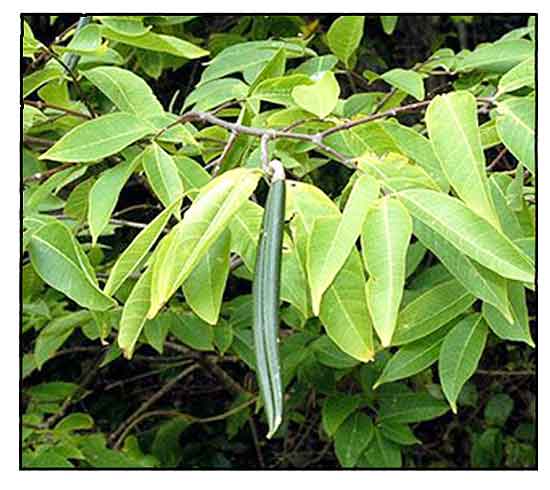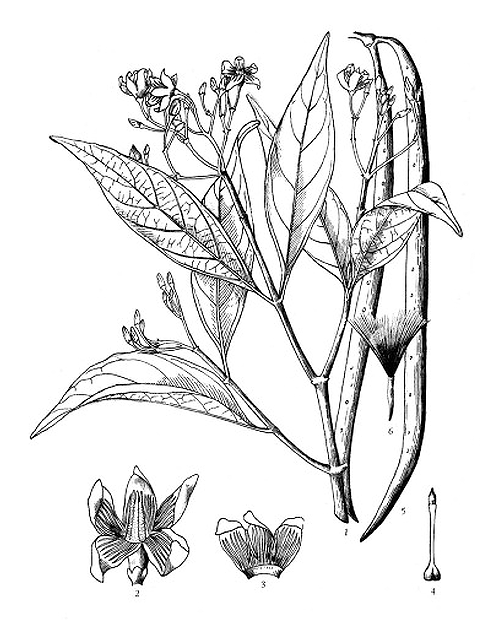
Family • Apocynaceae
Sorsogon lanete
Wrightia laevis Hook.f.
SMOOTH WRIGHTIA / MILLGAR
Lan shu
| Scientific names | Common names |
| Wrightia balansae Pit. | Sorsogon lanete (General) |
| Wrightia hainanensis Merr. | Millgar (Engl.) |
| Wrightia hainanensis var. chingii Tsiang | Smooth wrightia (Engl.) |
| Wrightia hainanensis var. variabilis Tsiang | White cheesewood (Engl.) |
| Wrightia laevis Hook.f. | |
| Wrightia laevis subsp. millgar (F.M.Bailey) Ngan | |
| Wrightia laevis subsp. novoguineensis Ngan | |
| Wrightia macrocarpa Pit. | |
| Wrightia millgar F.M.Bailey | |
| Wrightia sorsogonensis Elmer | |
| Wrightia laevis is an accepted species. KEW: Plants of the World Online | |
| Other vernacular names |
| CHINA: Lan shu. |
| MALAY: Jelutong pipit. |
| TEMUAN: Menta'os. |
| VIETNAM: Long muc trai to, Long muc nguom, Muc cham, Muc tron, Thung muc mo. |
Distribution Parts used Studies Availability |
May 2024
![]()
 |
| PHOTOS / ILLUSTRATIONS |
| IMAGE SOURCE: Wrightia laevis : Fruiting branch / © G Sankowsky : Autralian National Botanical Gardens / Non-commercial use / Image modified / Click on image or link to go to source page / Useful Tropical Plants |
| OTHER IMAGE SOURCE: Illustration: Wrightia laevis / J D Hooker © Flora of China Illustrations / CC BY-NC SA / click on image or link to go to source page page / Useful Tropical Plants |
Additional
Sources and Suggested Readings |
• |
DOI: It is not uncommon for links on studies/sources to change. Copying and pasting the information on the search window or using the DOI (if available) will often redirect to the new link page. (Citing and Using a (DOI) Digital Object Identifier) |
| List of Understudied Philippine Medicinal Plants |
| New plant names needed The compilation now numbers over 1,300 medicinal plants. While I believe there are hundreds more that can be added to the collection, they are becoming more difficult to find. If you have a plant to suggest for inclusion, native or introduced, please email the info: scientific name (most helpful), local plant name (if known), any known folkloric medicinal use, and, if possible, a photo. Your help will be greatly appreciated. |
• |
 |


 Constituents
Constituents